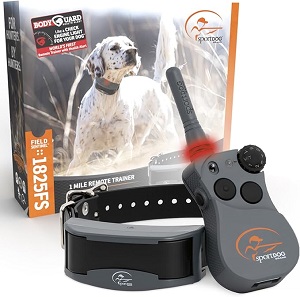
Foster a Dog: How You Can Make a Difference
Foster a Dog: How You Can Make a Difference in Their Lives
Introduction
Fostering a dog can be one of the most rewarding experiences for animal lovers. By opening your home temporarily to a dog in need, you can provide them with a safe, loving environment while they await a permanent family. Whether it’s a shelter dog recovering from surgery, a puppy who needs socialization, or a senior dog looking for comfort in their later years, fostering helps alleviate overcrowded shelters and gives animals a second chance at life.
In this guide, we’ll explore the importance of fostering, the responsibilities it entails, and how you can make a meaningful difference in the lives of dogs.
1. What Is Dog Fostering
Fostering a dog means providing temporary care in your home until the dog is adopted or is ready to return to the shelter. The length of fostering can vary from a few days to several months, depending on the dog’s needs.
Essentials for Your Newly Adopted Pet
Welcoming a shelter pet into your life is a beautiful journey. Here are some handpicked items to help your new friend feel safe, loved, and right at home:
-
Why is fostering necessary
Shelters often become overcrowded, making it difficult for them to give individual dogs the attention and care they need. Fostering helps reduce the burden on shelters by allowing dogs to live in a home environment where they can receive proper socialization, attention, and medical care. This ultimately increases their chances of being adopted. -
Types of foster situations:
Some dogs may need fostering because they are recovering from surgery or illness, others may be pregnant or nursing mothers, and some may simply need socialization or a break from the stressful shelter environment. Fostering is also common for dogs with special needs or behavioral issues that need extra care.
2. The Impact of Fostering on Dogs
When you foster a dog, you play a crucial role in their emotional and physical well-being. The change from a shelter environment to a home offers many benefits:
- Reducing stress: Shelters can be noisy, chaotic, and stressful for dogs, especially those that are anxious or fearful. A home environment provides them with calm and stability.
- Improving behavior: Dogs in shelters often develop undesirable behaviors due to stress, lack of exercise, or minimal human interaction. In a foster home, dogs receive more attention, exercise, and training, which helps them develop better manners and makes them more adoptable.
- Helping with socialization: Many shelter dogs may not have been properly socialized with people, other pets, or different environments. Fostering offers the chance to introduce the dog to new experiences, making them more adaptable and confident.
- Healing and recovery: Dogs recovering from surgery, illness, or neglect benefit greatly from one-on-one care in a quiet home environment. Fosters can give dogs the specialized attention they need to heal and recover, whether it’s managing medications or simply providing rest and relaxation.
3. Why Foster Dogs
Fostering can be a life-changing experience for both you and the dog. Here are some reasons why fostering is so important:
- Saving lives: By fostering, you help reduce overcrowding in shelters, giving the staff more time and resources to care for other animals. In many cases, fostering can save a dog from being euthanized.
- Preparing dogs for adoption: Dogs that have been fostered are often better prepared for adoption because they’ve already adjusted to a home environment, learned basic commands, and received the necessary socialization.
- Providing emotional support: Many foster dogs come from backgrounds of abuse, neglect, or abandonment. Fostering gives these dogs the emotional support they need to regain trust in humans, helping them become more adoptable.
- Enjoy the companionship: If you love dogs but aren’t ready for the long-term commitment of adoption, fostering allows you to enjoy the companionship of a dog temporarily while making a big difference in their life.
- Test the waters of dog ownership: Fostering is a great way for potential pet owners to experience the responsibilities of having a dog before committing to permanent ownership. It allows you to understand the time, care, and attention that goes into having a dog in your home.
4. How to Get Started with Fostering
If you’re ready to become a foster dog parent, here are some steps to guide you through the process:
- Contact local shelters or rescue groups: Many shelters and rescues have foster programs in place. Reach out to them to express your interest and learn about their specific requirements.
- Attend foster training: Some organizations offer training sessions for potential foster parents, covering topics such as dog care, handling, and the fostering process. This will help you feel more confident and prepared.
- Understand the commitment: Fostering can be a short-term or long-term commitment, depending on the dog’s needs. Be sure to communicate with the shelter or rescue group about the length of time you’re able to foster.
- Prepare your home: Ensure your home is safe and ready for a dog. This includes having essential supplies such as food, water bowls, bedding, and toys. Make sure your home is dog-proof, with no accessible harmful items.
- Discuss any support provided: Most foster programs offer support to foster parents, including food, medical care, and supplies. It’s important to clarify what resources will be provided and what you may need to cover.
5. What to Expect When Fostering a Dog
Fostering a dog can be both rewarding and challenging. Each dog will have different needs, and understanding what to expect can help you prepare for the experience.
- Initial adjustment period: Many foster dogs may feel nervous or unsure when they first arrive. It may take a few days or weeks for them to settle into your home and feel comfortable. Be patient and offer lots of positive reinforcement.
- Training and behavior: You may need to work on basic training or address behavioral issues. Whether it’s house-training, leash-walking, or curbing excessive barking, fostering provides an opportunity to help the dog develop good habits.
- Emotional support: Some foster dogs may be shy, scared, or anxious due to their previous experiences. Offering love, patience, and understanding will help build their confidence.
- Goodbyes can be hard: It can be tough to say goodbye when your foster dog is adopted, but remember that your role was to help them on their journey to finding a forever home. The joy of knowing you’ve made a positive impact far outweighs the sadness of parting ways.
6. Tips for a Successful Foster Experience
To make your foster experience as smooth and enjoyable as possible, keep the following tips in mind:
- Be patient: It’s normal for dogs to be unsure or scared at first. Give them time to adjust and always use positive reinforcement to encourage good behavior.
- Set boundaries: Establish consistent rules and routines to help your foster dog learn what’s expected of them. Consistency is key to helping dogs adjust and develop good habits.
- Stay in contact with the shelter: Regularly update the shelter or rescue group on the dog’s progress. They may offer advice or support if you encounter challenges.
- Promote your foster dog: Help your foster dog get adopted by taking quality photos, writing a detailed bio, and sharing their story on social media or through the shelter’s channels.
- Be prepared for emotions: Fostering can be an emotional experience. It’s natural to grow attached to your foster dog, but remember that the goal is to help them find a loving forever home. Each successful adoption is a new beginning for another dog you can help.
7. The Long-Term Impact of Fostering
The impact of fostering goes far beyond your individual experience. By fostering, you are part of a larger movement aimed at reducing euthanasia rates, improving shelter conditions, and increasing the adoption chances for dogs who need it most.
- Making space for other animals: Every time you foster a dog, you free up space in the shelter, allowing them to take in another animal in need.
- Helping shelters and rescues succeed: Fosters are critical to the success of animal shelters and rescue groups. By offering temporary homes, fosters alleviate the stress on overcrowded facilities and help ensure that dogs receive the care they need.
- Inspiring others to foster or adopt: By sharing your foster experience with others, you can inspire more people to get involved, whether through fostering, adopting, or supporting local shelters.
Conclusion
Fostering a dog is an incredible way to make a tangible difference in the lives of animals. By providing love, care, and temporary shelter, you are giving a dog a second chance at life and increasing their chances of finding a forever home. Whether you foster for a few days or a few months, the experience is fulfilling and helps improve the lives of countless dogs in need. Through fostering, you not only save lives but also make your own life richer by giving back to a cause that matters deeply.
Affiliate Products
We may earn a small commission when you shop through our links — it helps us keep sharing love and care for every dog out there, at no extra cost to you.
Up to 75% Discount

Dog Collar with Health Monitoring
BUY NOW »
Up to 55% Discount

Luxury Faux Furhuge Napping Bed
BUY NOW »

